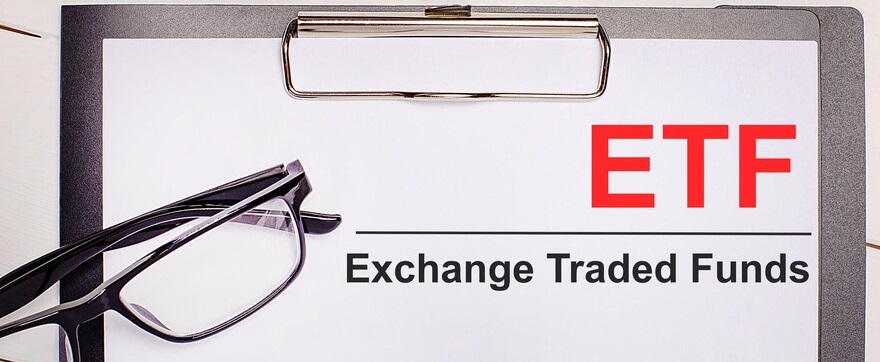In this blog, we look at 5 types of ETFs in the US markets. First, let’s understand what an ETF is. ETF stands for Exchange Traded Fund. It is a collection of many stocks/bonds which are traded under one fund, just like a mutual fund. However, ETFs are traded on the US stock exchanges with real-time pricing.
Before we get to the different types of ETFs, here is an interesting fact: In 2003, there were only 123 ETFs in the US markets. At the end of 2021, that number was more than 2,600!
Let us look at 5 types of ETFs in the US markets. We will cover equity ETFs and non-equity ETFs that hold non-equity securities such as bonds, commodities, and currencies.
1. Index ETFs
This is the most popular category of ETFs. Index ETFs seek to replicate and track a benchmark index such as the Nasdaq-100. In a way, they are similar to index mutual funds. However, unlike mutual funds, they can be bought and sold throughout the day, just like a stock. An example of an index ETF would be the Invesco QQQ ETF (QQQ), which tracks the Nasdaq-100. By investing in this ETF, an investor can get exposure to all the 100 stocks that are listed on the Nasdaq-100 without investing in each stock separately. Index ETFs are mostly passively managed, and as a result, have low expense ratios.
2. International ETFs
International ETFs are ETFs that track foreign securities. They may have a global or a country-specific focus. Through these ETFs, investors can diversify their portfolios across different geographies by investing in US ETFs. One such example is the Vanguard Total International Stock ETF (VXUS), which seeks to track the performance of the FTSE Global All Cap ex US index, an index that measures the investment returns of stocks issued by companies outside the United States. Another example is the Morgan Stanley China A Share Fund (CAF), which seeks capital growth by investing in A-shares of Chinese companies listed on the Shanghai and Shenzhen stock exchanges. It is important to note that ETFs which invest in a single country carry higher risks as compared to ETFs where the investments are spread across multiple countries. If a particular country goes through financial hardships, an ETF that only invests in securities based in that country may suffer. Unusually, the expense ratio of these ETFs is higher because of the additional costs involved in investing abroad.
3. Sector ETFs
As the name suggests, these ETFs only invest in the stocks or securities of a particular sector. The name of the ETF usually describes the sector or the industry it invests in. By investing in such ETFs, an investor can get exposure to a certain sector, rather than buying stocks of individual companies in that sector. For example, the Alps Clean Energy ETF (ACES) is designed to provide exposure to a diverse set of US and Canadian companies that are involved in the clean energy sector, including renewables and clean technology.
4. Thematic ETFs
While they may seem similar, thematic ETFs are not the same as sector ETFs. Unlike sector ETFs, thematic ETFs do not focus on a specific sector, but rather on a broad theme as a whole, such as disruptive technologies, climate change and so on. For example, the Global X Robotics & Artificial Intelligence ETF (BOTZ) provides an opportunity to invest in companies in developed markets that are involved in the development of robotics and/or artificial intelligence. Let’s say that you are interested in the potential of medical science extending and improving human life through advanced biotechnology solutions such as gene editing, stem cells, and so on. If so, you might be interested in the ARK Genomic Revolution ETF (ARKG). As an individual investor, you may not have the required knowledge and expertise to select stocks related to such themes. However, investing through a thematic ETF can help with that.
5. Dividend ETFs
These ETFs invest in a basket of dividend-paying stocks. In other words, they invest in high dividend paying companies. Dividend ETFs can not only provide long term growth, they can also provide a stream of income. However, one should note that unlike coupon payments on bonds, these dividends are not always guaranteed. Dividend ETFs give you an option of holding a basket of dividend paying stocks, rather than buying such stocks individually. One example of a dividend ETF is the iShares Core Dividend Growth ETF (DGRO), which has companies such as Microsoft, Apple, Pfizer, Johnson and Johnson, JPMorgan Chase and Co, among its top holdings.
We had a look at different types of ETFs in the US markets. Read this article to find out about five things you need to know before investing in ETFs. Remember that before you pick an ETF, you need to do proper research and consult your investment advisor.

